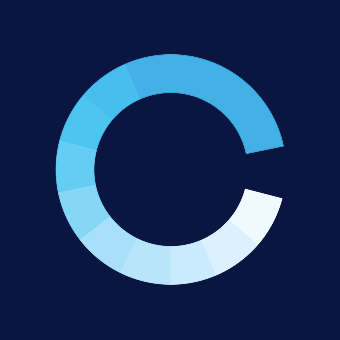


Using Technology to Transition from Founder-Led Sales: Q&A with David McFarlane, Evan Whelchel, Jenny Vance
The transition from founder-led sales is a vital step for startups beginning to build their team, expand their customer base, and scale operations.
But, when a company’s sales methodology and existing customer base have been developed and nurtured by just one or two people, it can be difficult to “let go of the reins” and relay that methodology to new hires—trusting them to run the sales pitch and succeed in closing deals.
This month, we sat down with sales experts David McFarlane (Operating Partner, Companyon), Evan Whelchel (CRO, Allstacks), and Jenny Vance (Founder/CEO, GrowthJen; Companyon Expansion Team Member) to chat about best practices for expanding a startup sales team, and how to utilize technology to make that transition smoother.
Q: As we see the progression of sales tools like AI chatbots, automated cold outreach, and so on, what is the process of building out a sales team starting to look like?
Evan Whelchel: Let’s be honest—everybody’s talking about sales efficiency these days, and you can create that efficiency with AI. You’re never going to be able to replace humans. Humans have their place, and people buy from people.
However, I think many folks make the mistake of throwing headcount at revenue and thinking it’s going to solve a problem. And ultimately, it doesn’t. It’s more about being smart and maintaining an “efficiency” mentality: “I don’t need a lot of salespeople. I just need a really tight process. I need the right tools at the right time to help with that process. And I need a little bit of automation.”
David McFarlane: It was very notable to me how some of our portfolio companies are increasing the use of tools like Storylane, which many people think is just a quick way of getting a demo up on a website. But it also helps you leverage your most critical resources. Instead of having your best Sales Engineer or Product Manager or even a founder on an important call, you can tell them what the problem is, then they can asynchronously build a cool, specific demo that shows how you solve that exact problem and how your value proposition uniquely meets the needs of your potential customers.
Evan: When you have a small team, your high-value resources should be focused on pipeline progression—moving opportunities through the sales cycle. Those are your higher costs, for lack of a better term, because of their competence. Your higher-cost resources should be focused purely on the closing motion, whereas you can use automation tools to focus on the lower-value activities.
Q: What are the best tool types for companies at that transition point? What tools or competencies should they be thinking about or building out?
Jenny Vance: They have to look at optimizing their CRM. They need the right workflows. At this point, they’re starting to capture information that can help them learn how to scale—and it’s really hard to do that retroactively. So, a little investment to ensure that things are workflowed the right way is really critical.
One tool I almost always recommend is conversational AI in the context of recording active sales and customer success conversations. Before that transition, we have founder knowledge all captured in deals. And so I often advocate for founders to invest in a tool that is going to capture [that knowledge]. It is very, very valuable in the context of knowledge transition.
David: In the good old days, BDRs were all in a boiler room, and part of the value was you got to hear what other people were saying. There was a sort of camaraderie to that. I think even tools like Fireflies, and its ability to be able to quickly and easily create these little snippets, allow you to be able to share the human experience of when something is going well or when a problem is being articulated far more effectively than it can be documented in writing. It really helps people get through a learning experience.
Q: What sort of processes do you put in place to make sure teams are actually using that software?
Evan: You have to identify your process and then understand what tools fit in your process as well. It does come down to cost efficiencies at times, but it also comes down to functionality and easy adoption. It’s identifying an easy process that makes sense and is complementary to what you’re trying to accomplish and then designing the tool stack behind that.
Q: How do you replicate that if people are working remotely?
Evan: Sharing talk tracks widely, openly Slacking them out, and leveraging the tools that you have in place—like Gong, like Fireflies, like Slack. You’re having constant communication enablement sessions. It’s a matter of utilizing the tools, documentation, generative AI, listening to calls, and just being very open, which helps people become more comfortable.
Jenny: Communication is the difference. Getting people out of their comfort zones and into that regular dialogue also takes some work. The other key, practice, is often the fundamental step that gets skipped. We can put all the documentation together we want, but is there a way to ensure it’s been truly reviewed? LMS technologies can help, but we’ve got to find ways to introduce an actual practice/discipline to ensure that our remote teams succeed.
Q: Have you found success with personality data tools like Crystal in your sales process?
Jenny: For me, it comes down to prep. The best sales reps always prepare in some way. And products like Crystal are phenomenal at framing how to communicate. “So we’re encountering a challenge in this deal. How will I put this challenge on the table for someone who’s a D on the DiSC Profile, versus an S?” I think there are tools to help us prepare and gain knowledge about people. That’s where I see some of those advantages come into play.
Also, implementing a post-discovery/pre-call strategy is a really valuable skill. Because instead of a founder showing up on the call and taking over, now they can do the pre-call prep—they’re enabling the salesperson with the right strategy before they get on the phone. Then, the salesperson is in the position to actually run that deal.
Evan: We want to tell salespeople, “You must have a talk track. You need to have a strategy. The customer wants to see X, Y, and Z, so you need to show them X, Y, and Z.” It’s important to have context around not the individual but the persona you’re selling to. What is this person doing day-to-day? What are they hired, measured, and fired for? And what points are they thinking about that may resonate in this call?
Q: Is there anything you’re seeing fast-growing companies doing that is at the cutting-edge, or just really clever or interesting, using some of these tools?
David: First and foremost, if you don’t solve this problem of transitioning from founder-led sales, you’re not going anywhere, and you’re not going to get funded. This is mission-critical.
But I’m seeing some of our portfolio companies leveraging incredible innovations. People have become very adept at building bots and tools to find sources of information that correlate to the market segment they want to work with, and the persona they want to work with, and pull that information—sometimes from competing websites.
Using these technologies, we’ve seen some of our companies handle 5,000+ active users with one single CSM. The productivity and efficiencies you can realize when you learn to leverage and adapt these technologies are astronomical. It means that you can work with a team you already have, know and love, and that’s already productive. You don’t have to constantly be thinking about, “How do I continue to add more people to this process?” It makes you more efficient in multiple different ways.
Key Takeaways
Some of the most important things you can do when building out your sales team and transitioning away from founder-led sales are:
- Establish customer success patterns and manual processes to use as blueprints while integrating AI to optimize workflows—don’t expect AI to do the heavy lifting.
- Figure out what works for you, and build tool stacks around that process—technology supports your people, not the other way around.
- Create a culture of open communication where everyone feels comfortable sharing talk tracks, learning experiences, wins and losses, etc.
- Leverage and adapt tools to serve your company’s purposes so even small teams can achieve astronomical productivity and success.
If you found this post informative, check out our blog for more insights into the expansion stage. Our team members have been there and lived to tell the tale—now we’re here to provide advice, guidance, and insider knowledge to the next generation of startup founders.
Our Resources
Get access to free tools to help accelerate your company’s growth, regardless of a future partnership with Companyon—because, we’re here to help.
Our Newsletter
Join our newsletter for helpful guides, expert insights and company updates delivered monthly to your inbox.



 Blog
Blog



